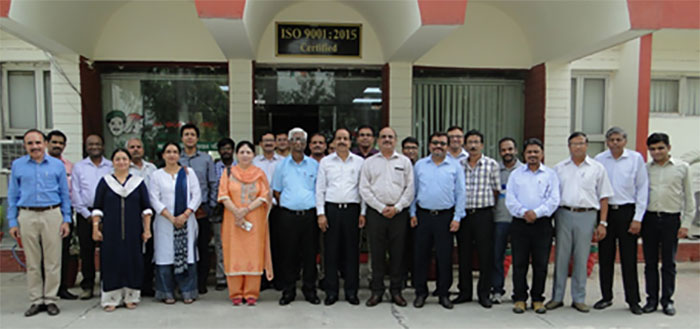
Veterinary Microbes
- First isolation in the country: Bordetella bronchiseptica from horse, Actinobacillus equilli from foal, Staphylococcus hyicus from pig, Methicillin-resistant coagulase negative Staphylococcus sciuri from goats, Trueperella pyogenes, Exiguobacterium spp. from pigs, Nocardia otitidiscaviarum from equine granulomatous pneumonia, Moraxella (Branhamella) ovis from ovine keratoconjunctivitis in sheep, Mannheimia varigena from buffalo.
- Isolation of anaerobic bacterium viz., Clostridium perfringens, Clostridium sordelli and Clostridium sporogenes isolated from disease outbreak in brick-kiln ponies
- Whole genome sequencing of Pasteurella multocida sub spp. multocida B:2 serotype, Trueperella pyogenes, Bordetella bronchiseptica, Pasteurella multocida, Actinobacillus equuli, Salmonella Gallinarum.
- First laboratory confirmed camelpox virus zoonosis.
- Methodologies developed to successfully purify a positive sense-RNA virus (FMDV) from a virus mixture containing a negative sense-RNA virus (PPRV).
- Adopted CRISPR/Cas9-medited gene editing technology to knock out antiviral host genes from the cultured cells.
- First time demonstrated that Sarco/endoplasmic reticulum calcium-ATPase (SERCA) may regulate virus replication.
- First time demonstrated that MAPK interacting kinase I (MNK1, a host factor) regulates buffalopox virus (BPXV) replication at the level of protein translation initiation.
- Generated flexible Gateway ORF library of equine influenza virus to study protein-protein interactions.
- First time demonstrated in vitro and in ovo broad spectrum antiviral activity of emetine against RNA and DNA viruses (PPRV/NDV/BPX/BHV-1), in absence of generating any drug-resistant viral mutants.
- Isolation of thermotolerant bacteriophages from Ganga river water against Pseudomonas spp, Siphoviridae phage against Citrobacter sedlakii thermotolerant and pH tolerant phage against Klebsiella pneumonia were isolated .
- Novel thermo tolerant bacteriophage from Ganga river water against Klebsiella pneumonia was assessed for its effectiveness of phage therapy in mouse model

